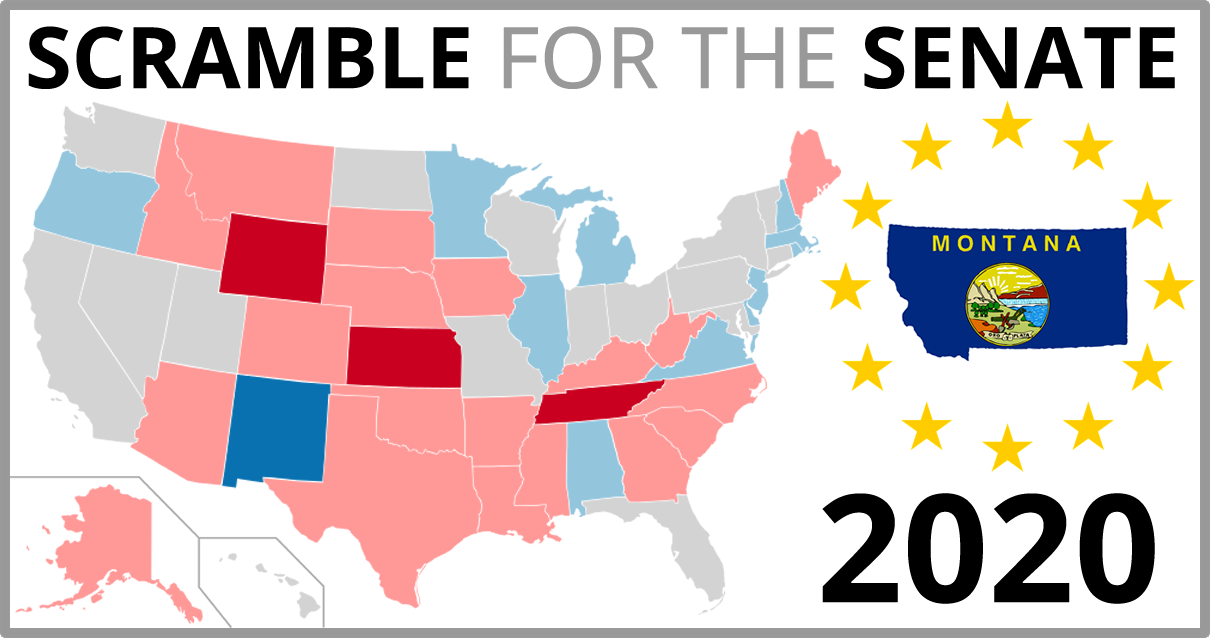To say that Donald Trump won the state of Montana in 2016 would be an major understatement. The Republican nominee blew Hilary Clinton out of the water, beating his Democratic rival by over twenty points.
Montana – like its neighbors Idaho, Wyoming, and the two Dakotas – is considered by most political analysts to be one of the national citadels of Republicanism, and Trump is on track to win there again in November.
However, the Treasure State has a more complex political landscape than presidential election results would suggest.
In 2016, the same voters who handed their state’s Electoral College votes to Donald Trump also re-elected a Democrat to the governor’s mansion in Helena. Four years later that Democrat – Steve Bullock – is running for the U.S. Senate.
Originally, Bullock had much bolder ambitions for 2020 — he was one of the two dozen Democrats who jumped into the race for the presidency.

Unfortunately for Bullock, his late entry to the race and his relatively low profile put him at a disadvantage almost immediately. He didn’t help himself in the second round of debates (the only round he qualified to enter) by siding with neoliberals like John Delaney against the dynamic duo of Elizabeth Warren and Bernie Sanders, and got thoroughly dressed down as a result. Bullock failed to qualify for any more debates, and dropped out of the race in December.
Although Bullock failed to impress Democratic voters, Chuck Schumer’s team soon came calling. After much coaxing, the Democratic Senatorial Campaign Committee recruited Bullock to take on Senator Steve Daines in his home state.
Once Bullock entered the race, all the other prominent candidates quickly withdrew. Bullock won over 95% of the vote in the primary.
Bullock’s run for Senate could not have been timed more perfectly.
The coronavirus pandemic (or rather, the White House’s pathetic response to it) has put the role of governor at the front and center of political life to a degree unseen for decades. While Bullock has not had the national media coverage of Andrew Cuomo or Gretchen Whitmer, he has actually had more success; Montana has the lowest COVID-19 infection rate in the country, thanks largely to the effective measures taken by Bullock’s office. Voters have taken notice, and Bullock enjoys extremely high approval ratings.
Bullock’s opponent, Steve Daines, came to the race with a belief that sticking to Trump like glue would be rewarded by Montanans. This strategy has backfired so far, as Trump has floundered in response to national crises, but Daines has stuck with his strategy. The Montana senator was one of the only politicians in the country to actually praise Trump after Trump unleashed police and National Guard troops on peaceful protesters in order to pose for a publicity stunt.
Daines’ approval rating among Montanans is twenty percent behind Bullock’s.
Although reliable polling in Montana can be hard to come by, Cook Political Report recently changed their assessment of the race from “lean Republican’ to “toss up.”
Governor Bullock portrays himself as a middle of the roader who can work with Republicans. On many issues, he opposes progressive policy directions. During the presidential primary he argued against Medicare for All and the Green New Deal, and his views on nuclear proliferation are disconcerting.
However, Bullock has excelled at pushing for a number of progressive priorities in Montana. Most notably, he has campaigned for years against the corrupting influence of money in politics. As Montana’s Attorney General, Bullock defended a Montana state law in a case that effectively became a challenge to the Supreme Court’s Citizens United (or as we prefer to call it, Corporations United) decision.
As governor, Bullock has promoted legislation and took executive action to curtail the spread of dark money in his state’s politics. Bullock’s determination on this issue – which affects all other issues in the money-soaked halls of Congress – would make him an asset for progressives in the Senate.
Bullock has also shown an encouraging flexibility on certain issues. His stance on gun safety has changed over the years as he has become increasingly in favor of gun responsibility laws. It is not too far a stretch to imagine a future Senator Bullock could be pushed to the Left on issues like healthcare and climate justice.
Of course, first Bullock has to win. Polling suggests he’s within striking distance of Daines. He will need to finish strong despite the pandemic, and convince Montanans to vote a split ticket. Bullock can take comfort in the fact that Jon Tester was able to prevail over his Republican opponent two years ago despite Trump’s repeated trips to the state to campaign against him.
Montanans may still feel an affinity for Trump, but that doesn’t mean they’re unwilling to consider a Democratic candidate in a downballot race.


What a great rundown on this race. Wonderful, clear, incisive.